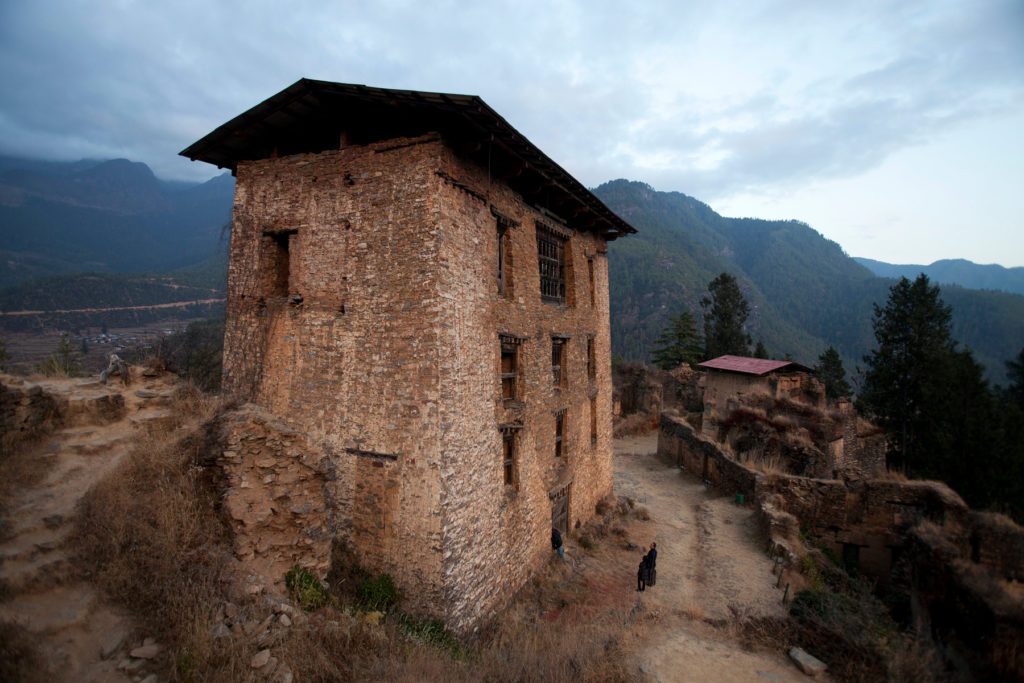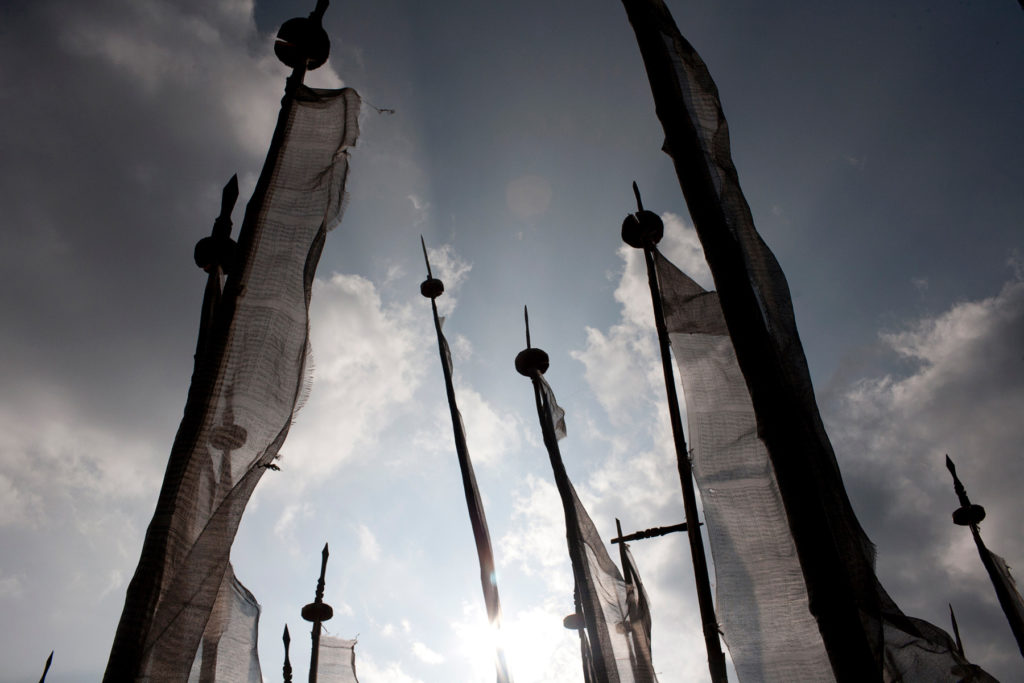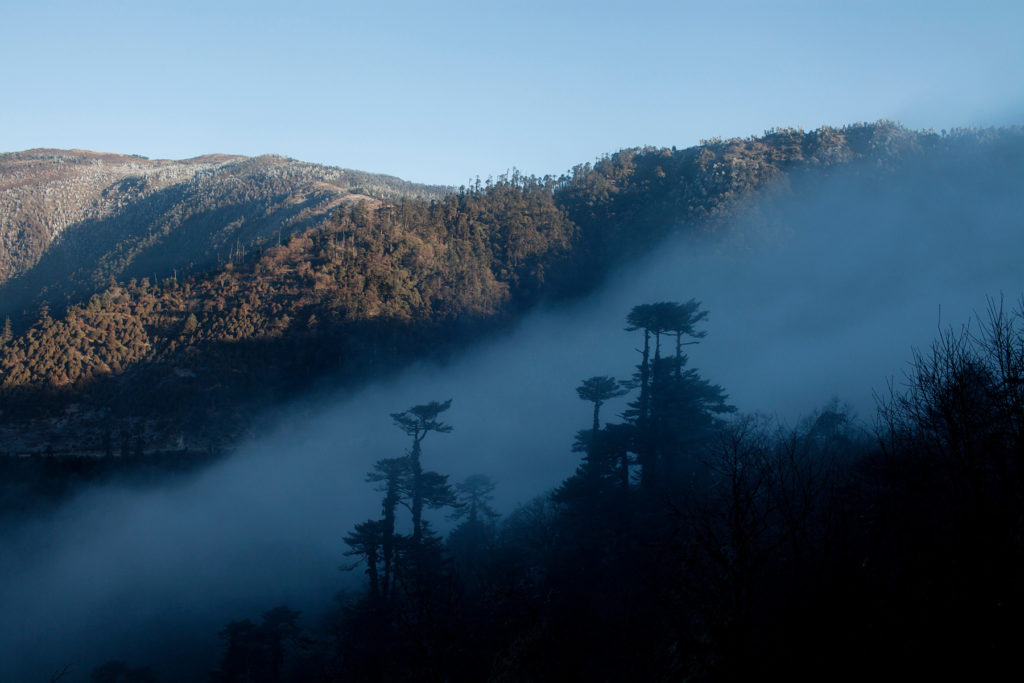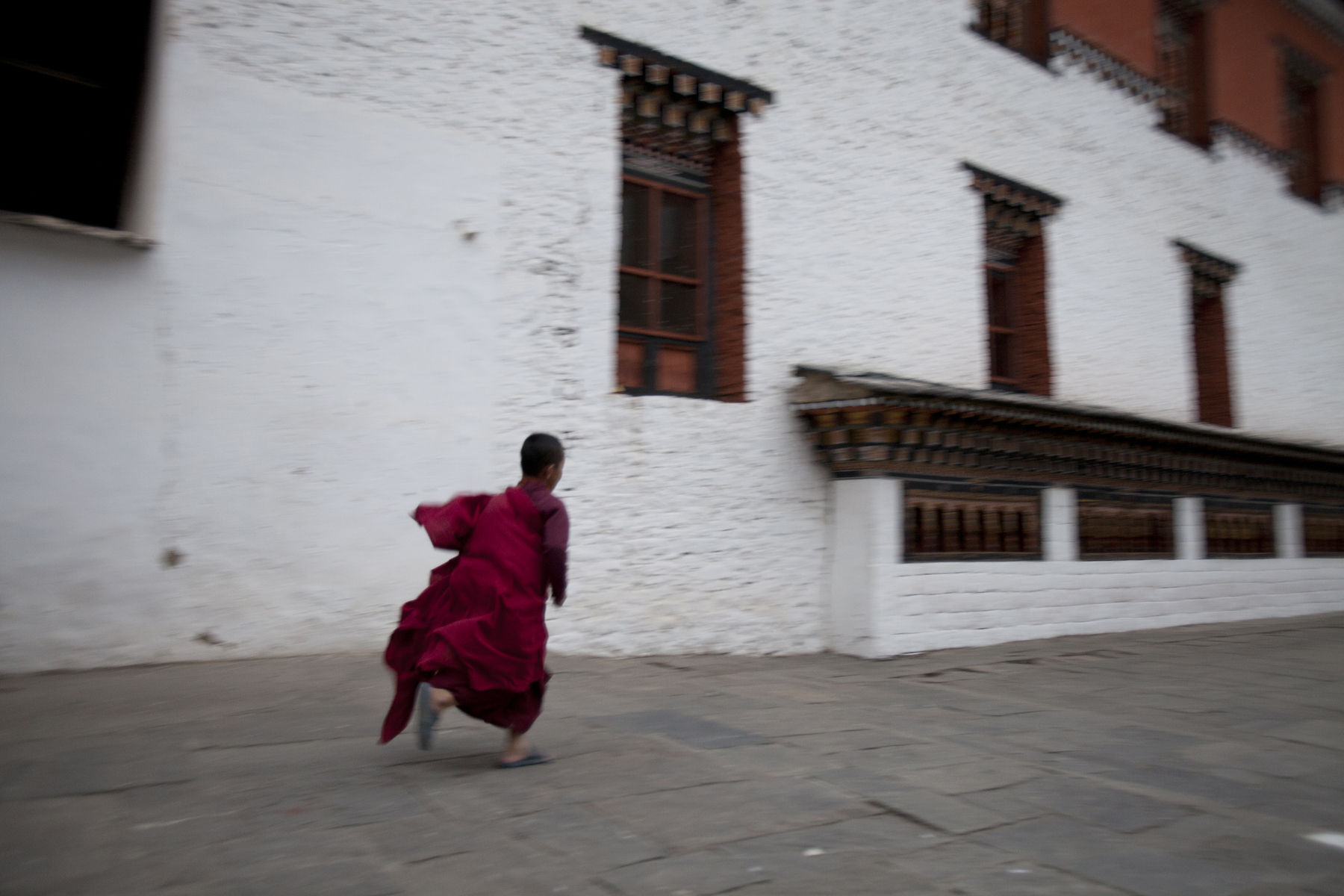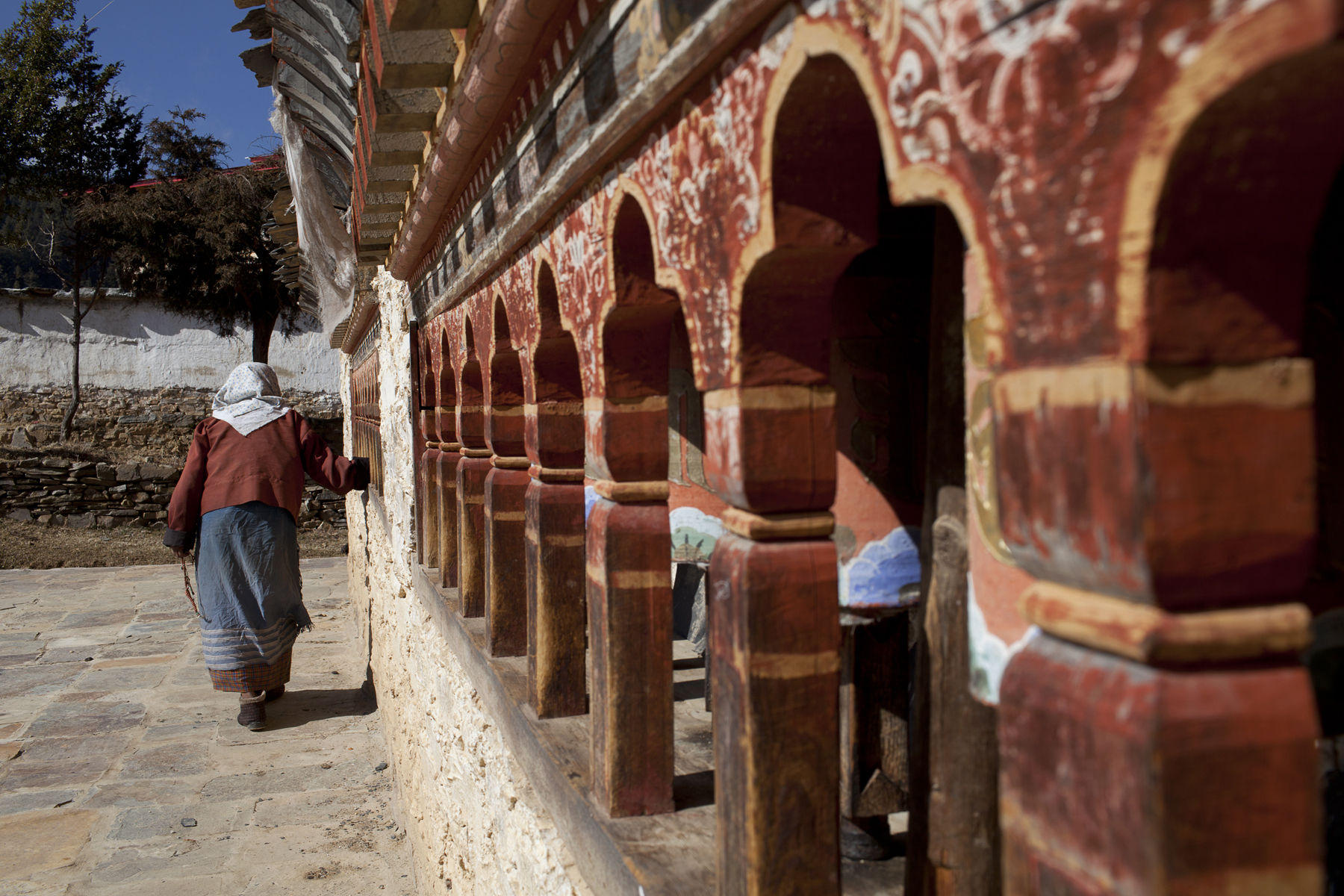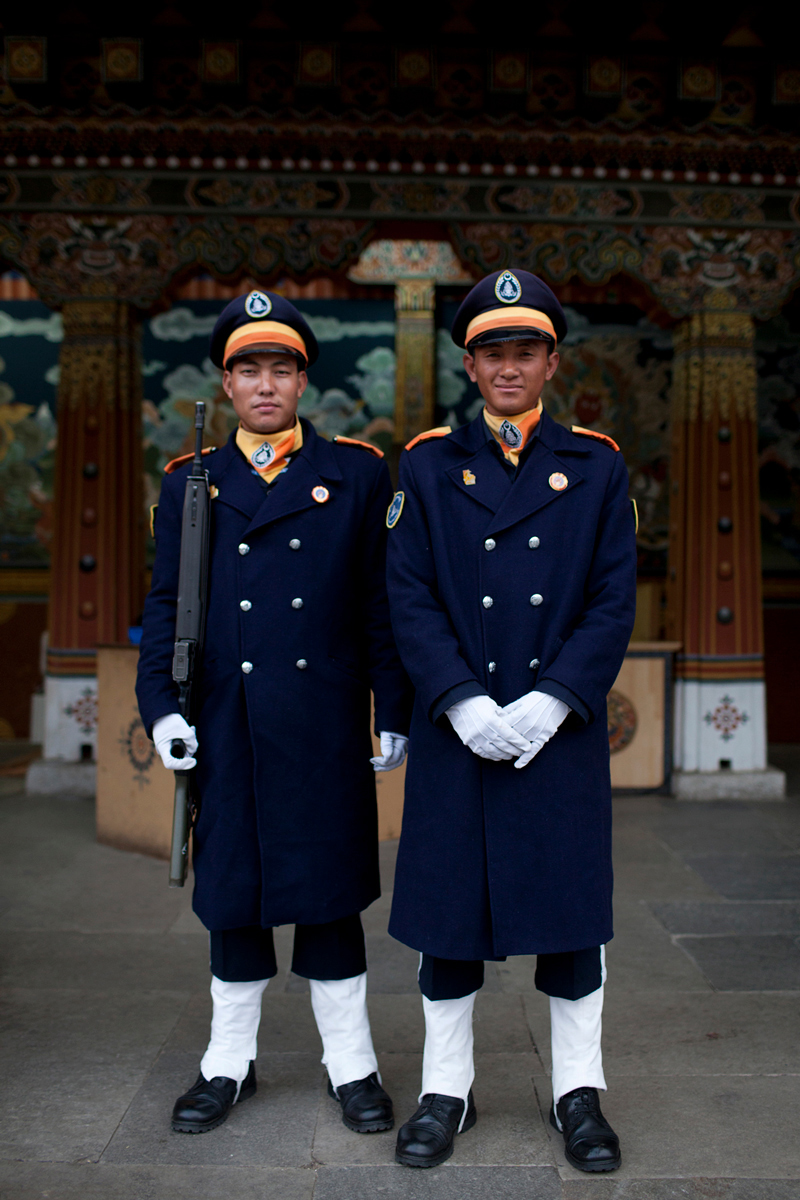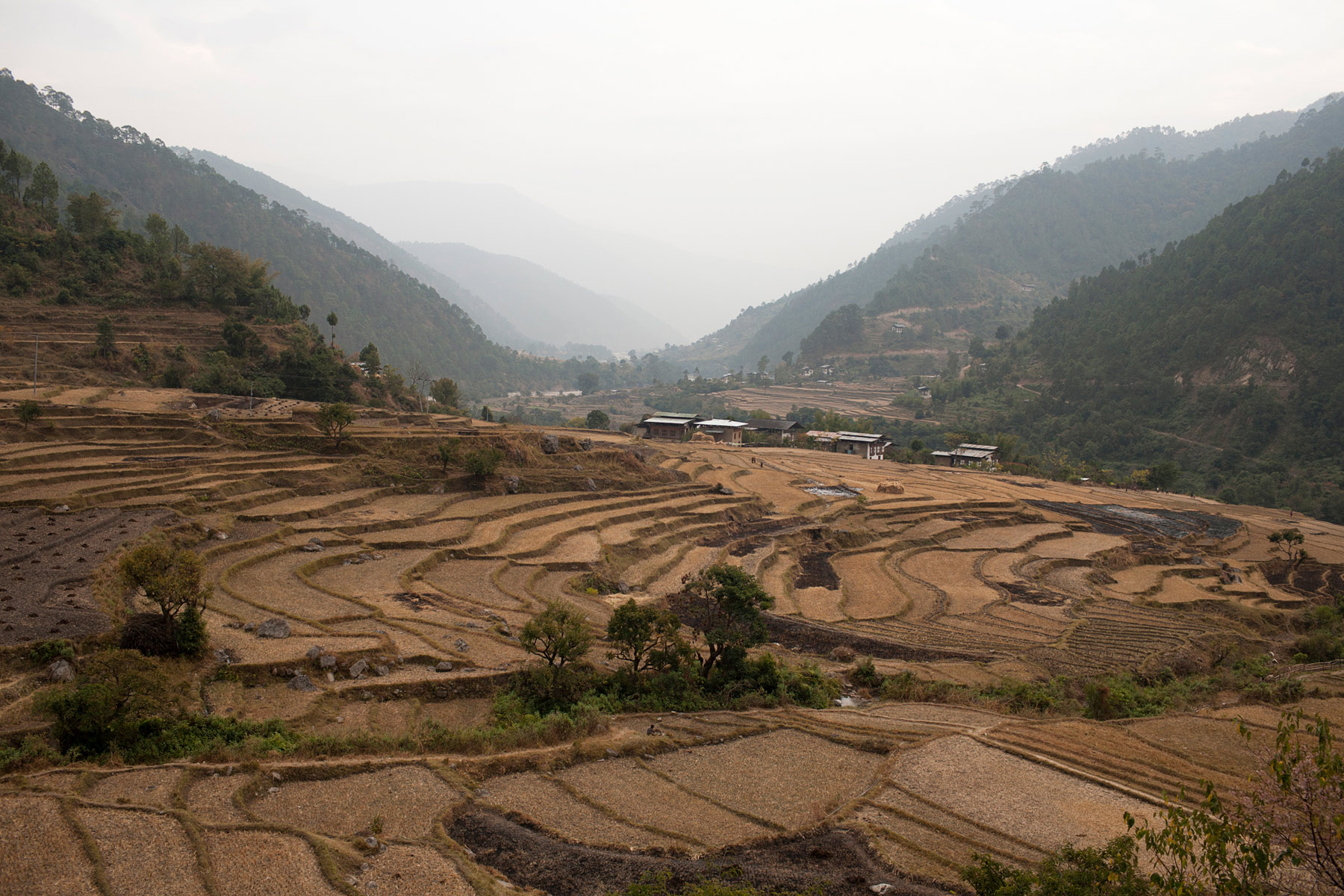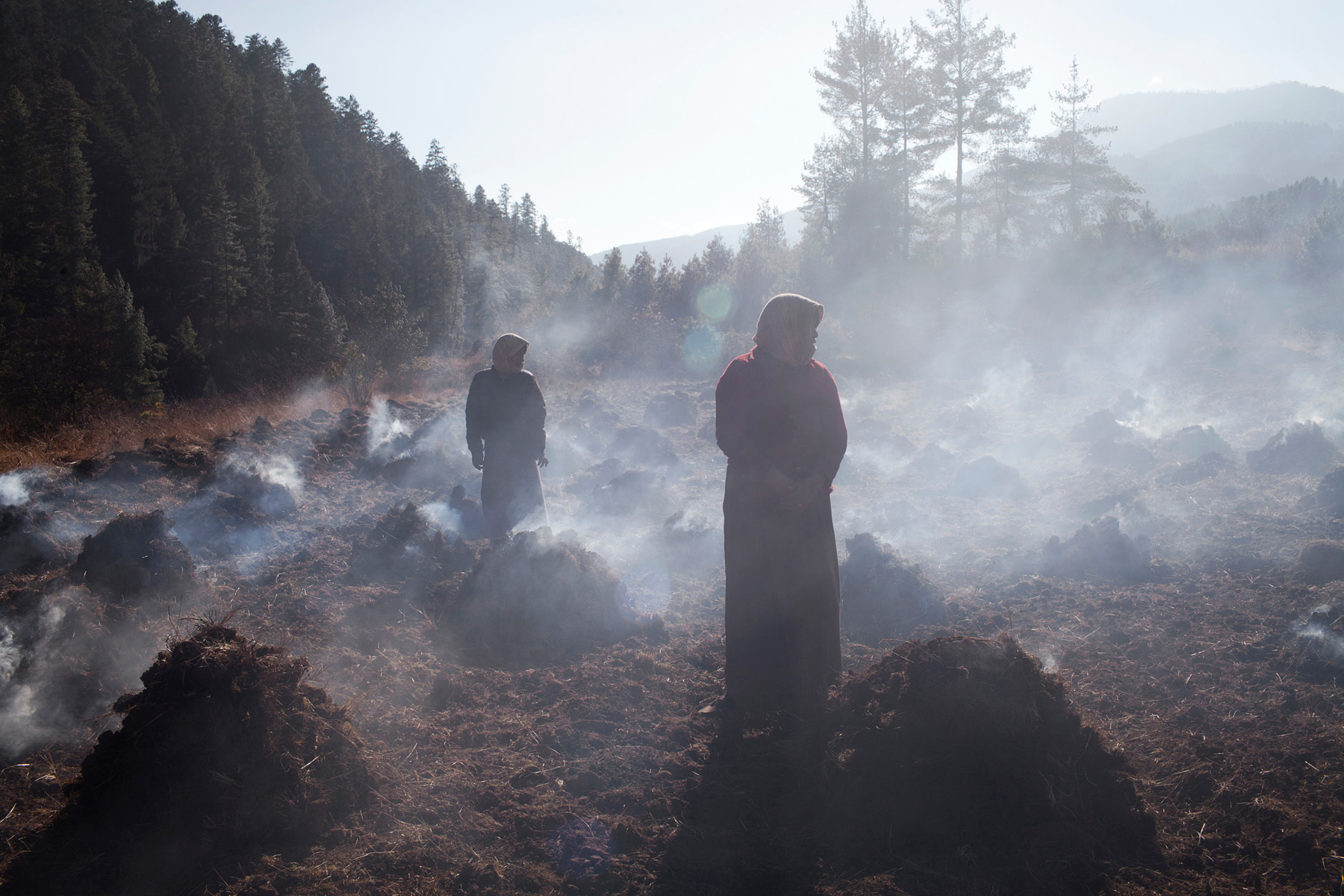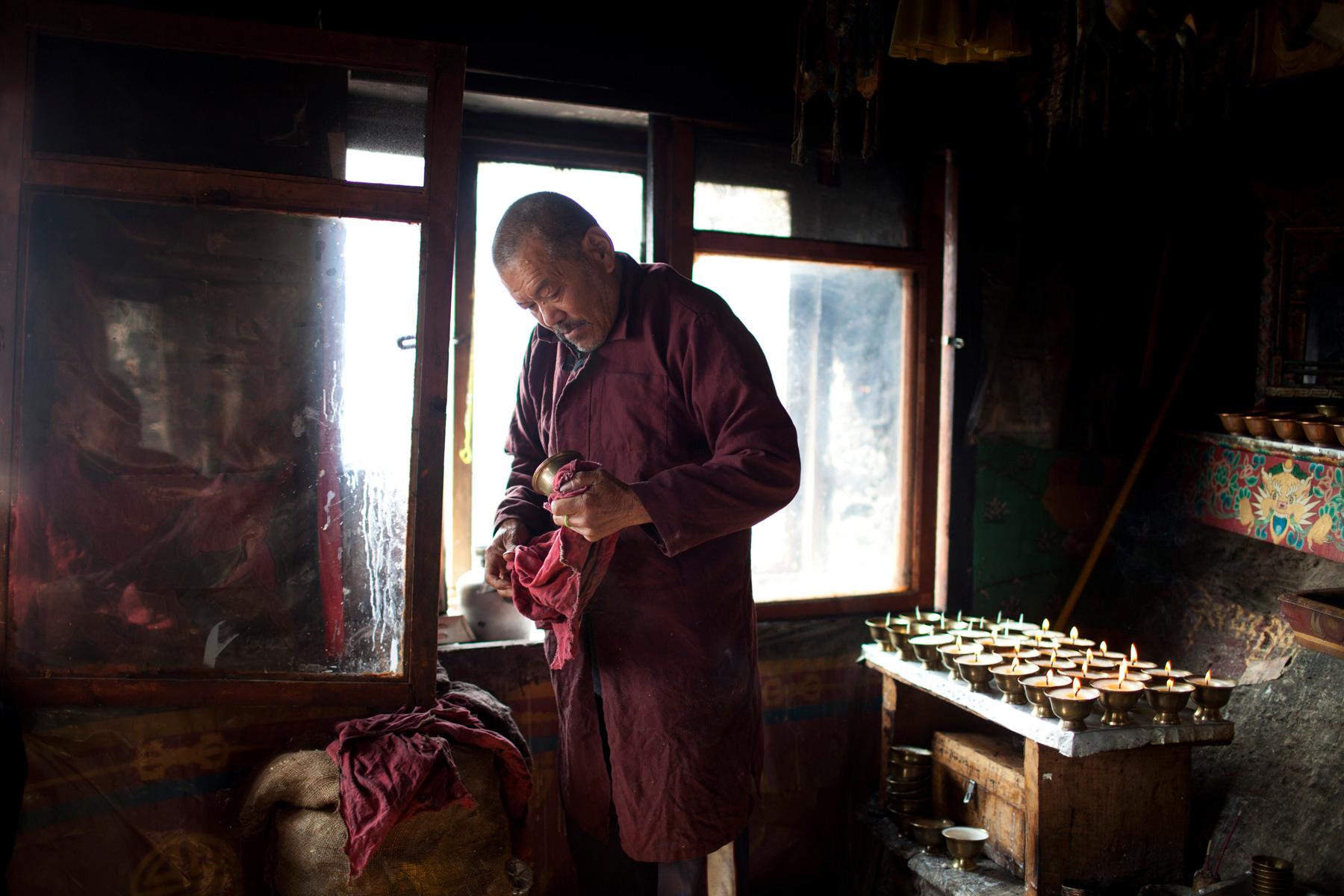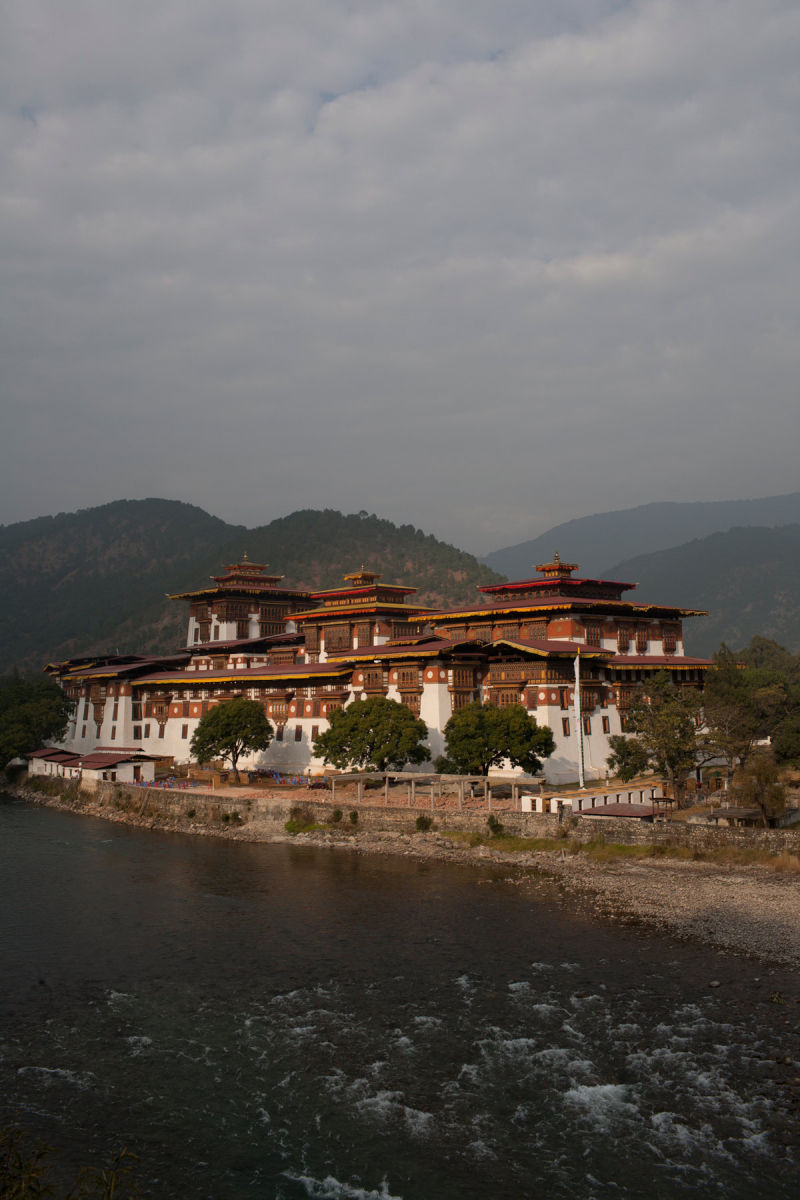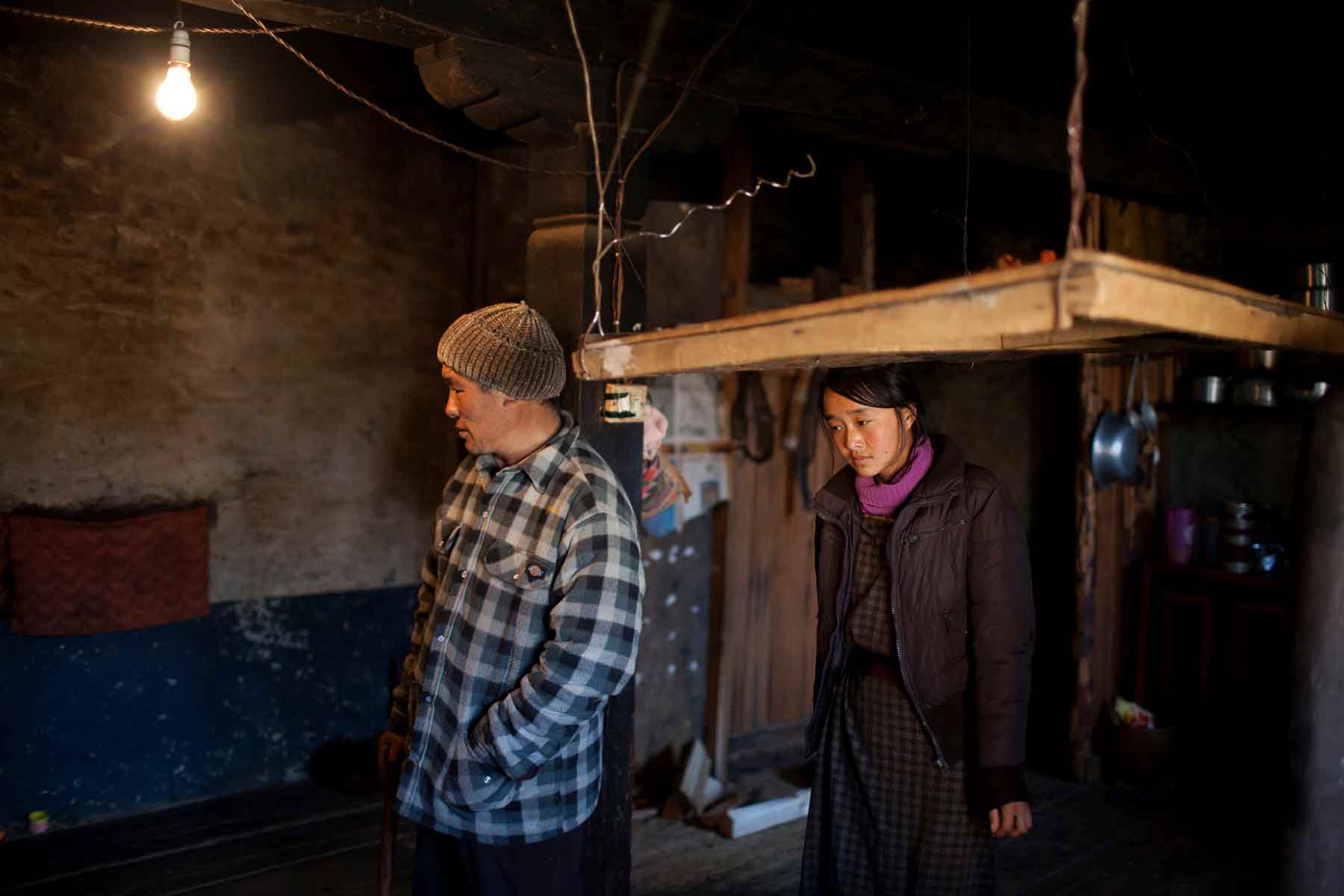The Taktsang Palphug Monastery better known as The Tiger's Nest is a Himalayan Buddhist sacred temple visited by thousands of pilgrims and tourists every year. It was built around the cave in 1692 by Gyalse Tenzin Rabgye, who was said to have flown there on the back of a tiger, and has become the cultural icon of Bhutan.
Drukgyal Dzong was a fortress and Buddhist monastery that was destroyed by a fire in 1950. It was built to commemorate victory over an invasion from Tibet.
Many prayer flags stand in the Phobikja Valley, famous for its variety of black necked cranes. It is believed that the special blessing power of the mantras printed on them is spread all over the world by the wind.
A young monk runs around at Simtokha Dzong, Bhutan's oldest Dzong, located at the junction of the roads leading towards the Punakha and Paro valleys.
Chajhar who claims to be 105 years old visit the Ura Lakhang Monastery every day twice and spend a few hours doing the kora (circumambulations) around and reciting prayers. Ura Valley is the highest of the four valleys in Bumthang.
A tourist guide who is wearing a traditional gho, stands up at the entrance of Drukgyal Dzong, a fortress and Buddhist monastery that was destroyed by a fire in 1950. It was built to commemorate victory over an invasion from Tibet.
A couple of police men guard Simtokha Dzong, Bhutan's oldest Dzong, located at the junction of the roads leading towards the Punakha and Paro valleys.
Pema Yangzom, 74, feeds the pigeons at the National Memorial Chorten in the capital Thimpu in order to get enlightenment. She spends an average of 3 hours a day doing the kora.
At the capital Thimpu, of less than 100,000 inhabitants, only one police men regulates the traffic. In fact the Bhutanese are opposed to the idea of installing traffic signs.
Young kids from Lungtenphu Primary School in Thimpu practice their performances for Bhutan's National Day celebrated on 17th of December every year.
From left to right, Karma, 22, Sherab Zam, 28, and Younten Zangno, 22, train at the Bhutan Archery Foundation. Even thought Sherab Zam participed in the London Olympics, she considers that female archery is still not very popular in Bhutan.
Dozens of prayer flags are displayed around the Phobikja valley. It is believed that the special blessing power of the mantras printed on them is spread all over the world by the wind.
Farmers in Bhumtang practices the slash-and-burn agriculture, a farming method that involves the cutting and burning of plants in a forest to create a fertile land.
Farmer Lhakpa Dem, 29, takes a break as she carries the stubble to another village. In a country covered by forests (65% of the land) only a few regions, like this one at the Tang valley at 2,800 meters of altitude, are dedicated to farming.
Farmer Lhakpa Dem, 29, (right) and her daughter Choki Om, 8, (left) carry vast amounts of straw to their homes in the Tang Valley in the Gangte Nature Trail.
In a country covered by forests (65% of the land) only a few regions, like this one at the Tang valley at 2,800 meters of altitude, are dedicated to farming.
The religious images are omnipresent in the landscape in Bhutan, like this golden Buddha painted on the rock, on the road leading to the Trongsa monastery.
A volunteer cleans copper candle holders used at the Taktsang Palphug Monastery in Bhutan.
Bhutan, is a country as big as Switzerland, with about 700000 inhabitants. With India and Tibet as their neighbors, it resembles the Shangri-La, an utopian place of peace and serenity imagined in English literature.
Pungthang Dewachen Phodrang (Palace of Great Happiness) or Punakha Dzong was constructed in 1637 and it is Bhutan’s most beautiful Dzong.
Bhutan, is a country as big as Switzerland, with about 700000 inhabitants. With India and Tibet as their neighbors, it resembles the Shangri-La, an utopian place of peace and serenity imagined in English literature.
Many prayer flags stand in the Phobikja Valley, famous for its variety of black necked cranes. It is believed that the special blessing power of the mantras printed on them is spread all over the world by the wind.
Families in Bhutan visit on a regular basis the viewpoint at The Great Buddha Dordenma site, located amidst the ruins of Kuensel Phodrang, the palace of Sherab Wanqchuck, the thirteenth Desi Druk, overlooking the southern approach to Thimphu, the capital of Bhutan.




